Jammie Holmes has been his family portraitist since the sixth grade, when he would sketch photo-realistic drawings of his great grandmother, aunts and uncles. Born in the small rural town of Thibodaux, Louisiana, he was curious from an early age about the world beyond his city’s limits. But it wasn’t until 2017, a year after he’d moved to Dallas, that he decided to try painting.
Completely self-taught through the study of artists like Gordon Parks, Rashid Johnson and Kevin Williams, today Jammie’s work explores his core memories and experiences living as a Black man in America. The landscapes he paints depict every day scenes, often centring family, community and his personal political heroes; while his self-portraits are experiments in both accepting and recreating himself anew.
We spoke to the artist about deciding to pick up a paintbrush, revelations from his journey in therapy and what it means for him to leave a lasting legacy.
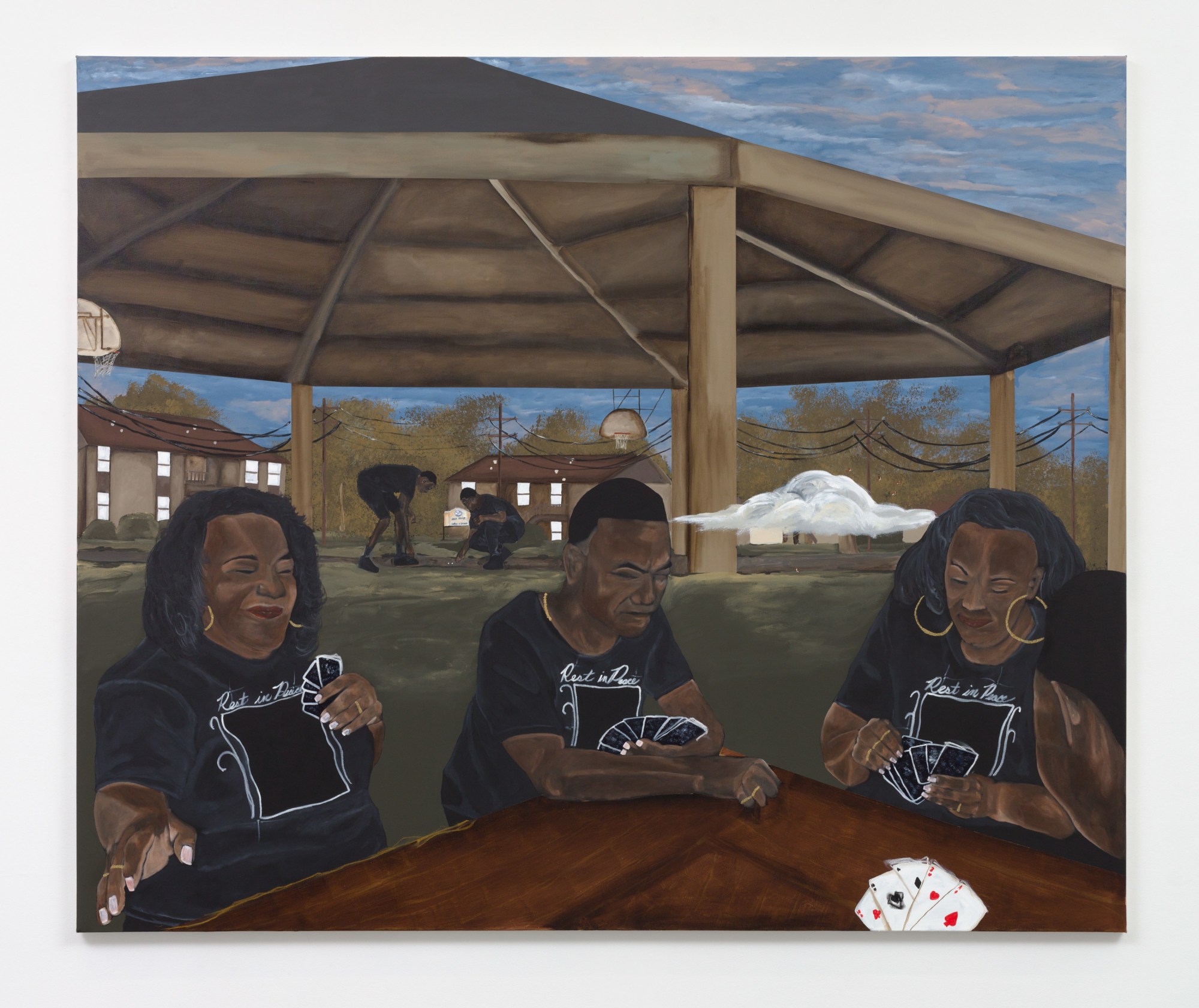
When did you begin painting?
I moved to Dallas in 2016 and went to the Modern Art Museum in Fort Worth for the first time. It was actually the first museum I ever went to, for an exhibition of KAWS’ work. The idea of seeing these gigantic pieces and seeing the reaction of the people really engaging with the work. I wanted to be able to express myself like that, but I was kind of hesitant about it, so I didn’t really take it seriously. [Around the same time], I had started doing therapy and my therapist was talking about expressing yourself. That’s when I was like, okay, I’m gonna figure it out. I didn’t even know where to pick up paintbrushes.
It was something that I wanted to give a shot, because I always sketched when I was younger. I would look at photos of people and I could sketch them like it was nothing, without being taught. It was always like a gift in me. By 2017, I decided to really try it.
So you had been holding on to this gift since you were young?
My grandmother still has the sketches that I did when I was in the sixth and seventh grade. It started because she had this photograph of her mother – the only photograph of her mother. And I remember around this time, you know, printers and scanners weren’t popular, so she asked me to sketch her mom so that she could give to her sister. I ended up having to do it like three different times [for each of her sisters]. All three times, it looked just like the photograph. To this day she still has those hanging up.
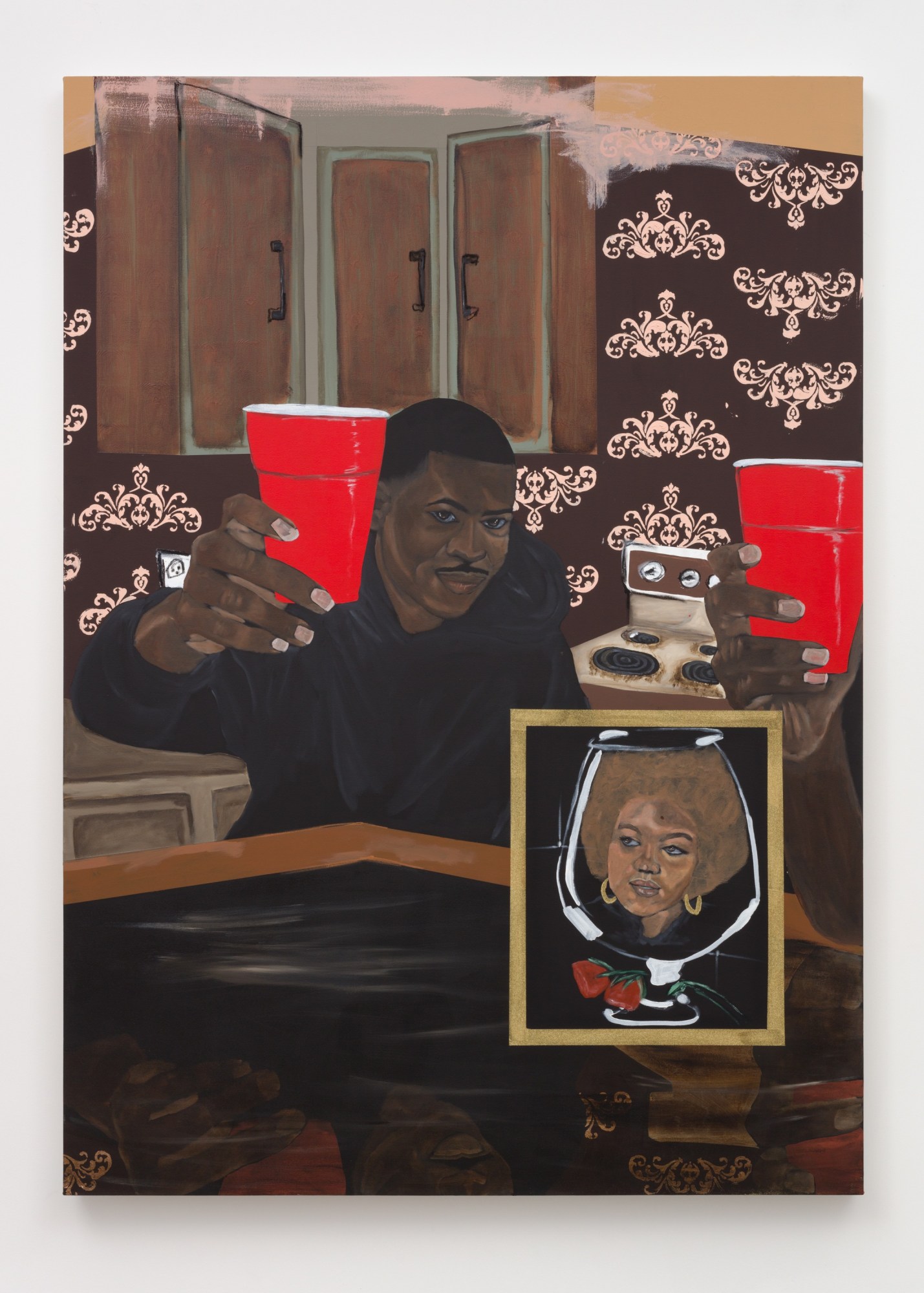
You were the family artist.
I most definitely was! Anything that they needed a sketch of, I was on it.
Can you tell me more about the town that you grew up in?
Thibodaux is south of New Orleans. It’s closer to the Gulf of Mexico. It’s an old slave town, you know? It’s surrounded by swamps and sugar cane fields. Growing up, you didn’t have access to the outside world unless you knew somebody that travelled.
In the time I was growing up, the internet wasn’t a real big thing. We weren’t Googling anything. You pretty much were a product of your environment. Whatever you saw, that’s what you wanted to be. But I got my hands on DuPont Magazine — my barber had one in his shop — and I remember stealing it, because they had so many cars, Rolexes, beach houses, tour buses, all this shit that I’ve never seen in my life. You’re not gonna see that rolling around Thibodaux. Those things always stuck with me.
Did you see this path that you’ve taken for yourself when you were growing up?
I never thought painting or sketching would be a thing. So I never, never really understood how I was gonna leave. I’d come to Dallas earlier looking for a job; I got an interview but they told me they were only hiring local residents. So I told them that I was living there already, and they were like, “Can you start tomorrow?” I was like, holy shit. I moved everything that I had in my small Impala and went to work the next day. I stayed at a hotel for a few weeks until I got enough money to get an apartment.
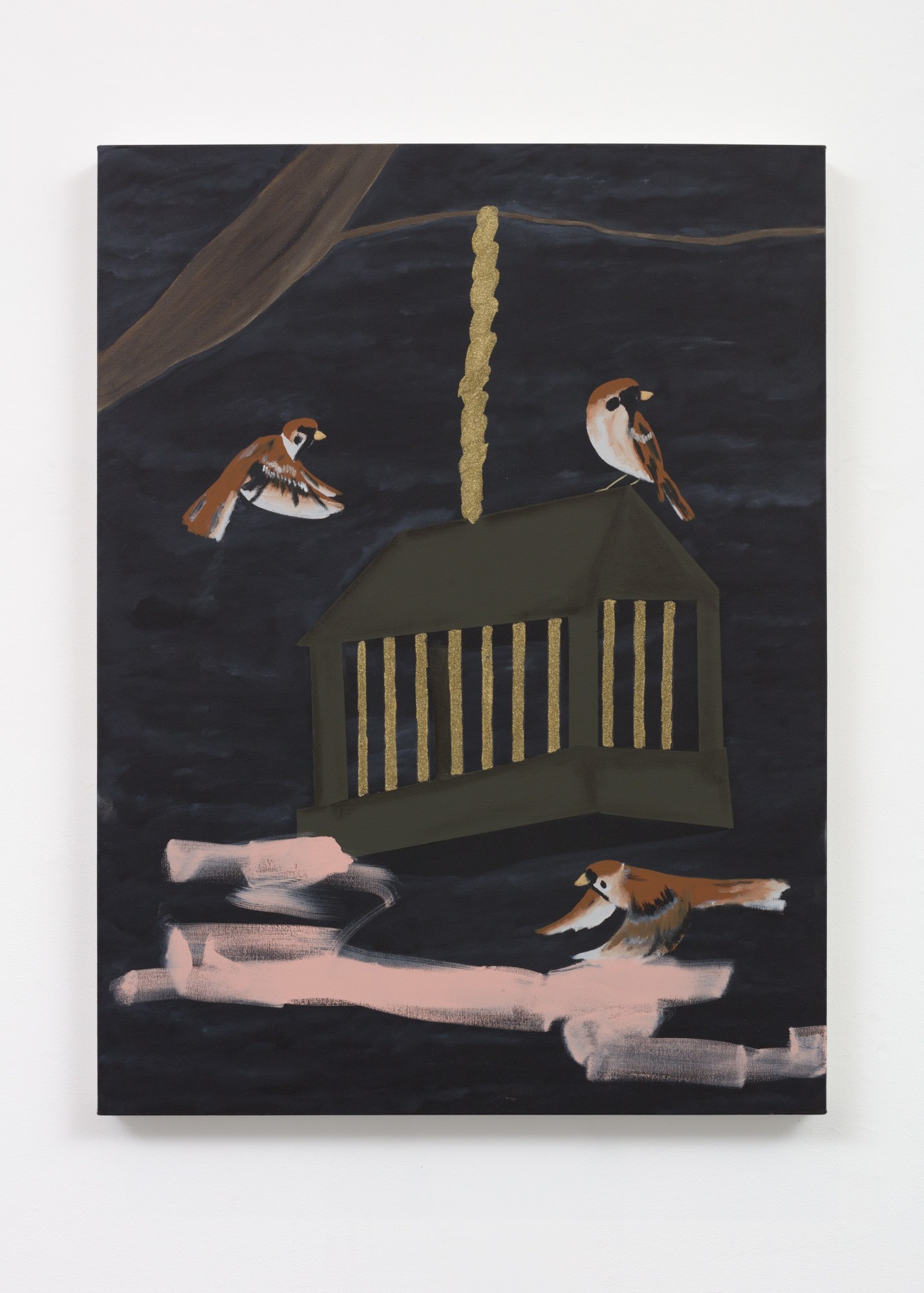
You mentioned a conversation in which your therapist suggested you express yourself through painting.
Yeah, I feel like therapy actually helped me to be a better artist. There was a lot that I held in and there was a lot that I didn’t know how to even forgive myself for. I gave myself such a hard time, and I felt like therapy taught me how to release that energy. She told me to fall in love with something. I started putting that into my art.
It was more the idea of feeling like I gave up on certain things too soon. I didn’t go to college, I didn’t try so many different things. I would start — and I was always talented at everything that I touched, everything that I did — but I would just give up. I was rough on myself.
I still hold those values that she taught me, and I still look at myself in the mirror. That’s where all the self-portraits came from in 2021. I finally felt and understood what my therapist was telling me: “Just face it, face yourself.” I started painting these portraits and it was a time when I was finally looking myself in the eye. It was almost like me recreating myself, because like when you look in the mirror, you are already what you are; but when you’re painting yourself, you’re actually creating yourself from absolutely nothing.
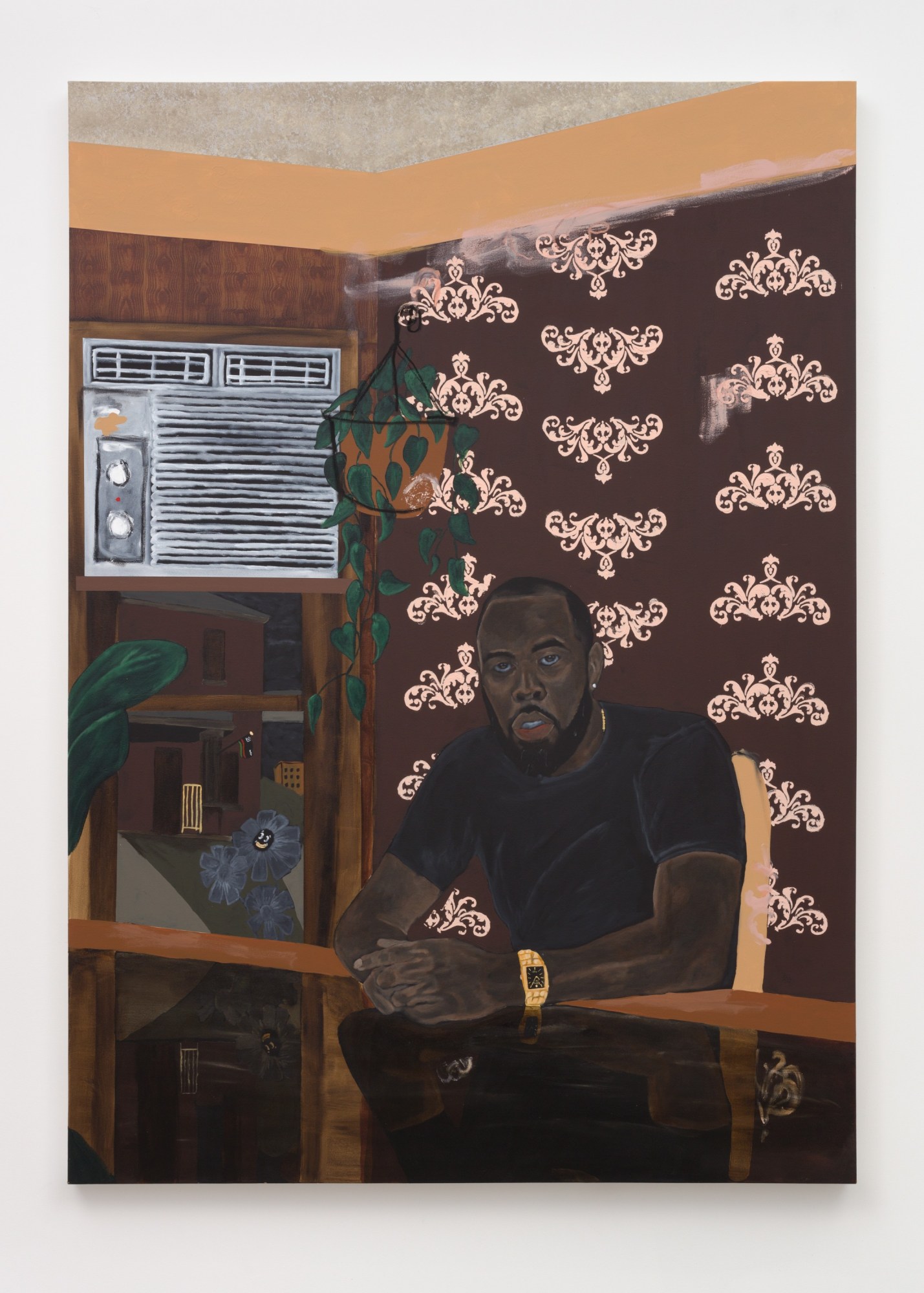
Recreating yourself. I’ve never heard self-portraiture described like that, and it’s such a transformative process if you look at it that way. On another note, I’ve seen that you’ve explored sculptural work off of the canvas as well, like your flag.
When I created the flag, it was [born from a] thought I had. I feel like Black folks, we have to be cautious about certain things, right? If we walk into a store, we immediately feel like they’re watching us to make sure we’re not stealing. When we walk out of the house, we immediately make sure that we present ourselves a certain way so we don’t look dangerous. We are always trying to survive. So when I created the flag, I used the Pan-African colours and I put the eyes in there, asking people to see the world through the skin of a Black person. See the way we have to see the world.
We don’t try to understand each other’s cultures. We don’t try to understand each other’s problems.
Black folks from the hood, when the police get behind us we automatically feel like, ‘Shit – either we’re going to jail, we’re gonna die, or something’s gonna happen’. We shouldn’t have to think like that, but that’s what the flag represents. Whenever I do these frames I’m pulling pieces from the 1800s or the 1700s. I’m doing it because I feel like at that time, Black people didn’t exist in those frames. They didn’t exist in the art world. They didn’t exist anywhere. So that’s when I started taking those things and repurposing them.
You know, if I go to these secondhand stores, I’ll find either frames or Jim Crow racist statues. I’m always buying them up. I’m gonna repurpose them for something more positive and educational. I feel like creating is the most important thing for me; to just create the world that I see and have that conversation. Even when I’m not around on this earth, I want my work to still have these conversations with people.
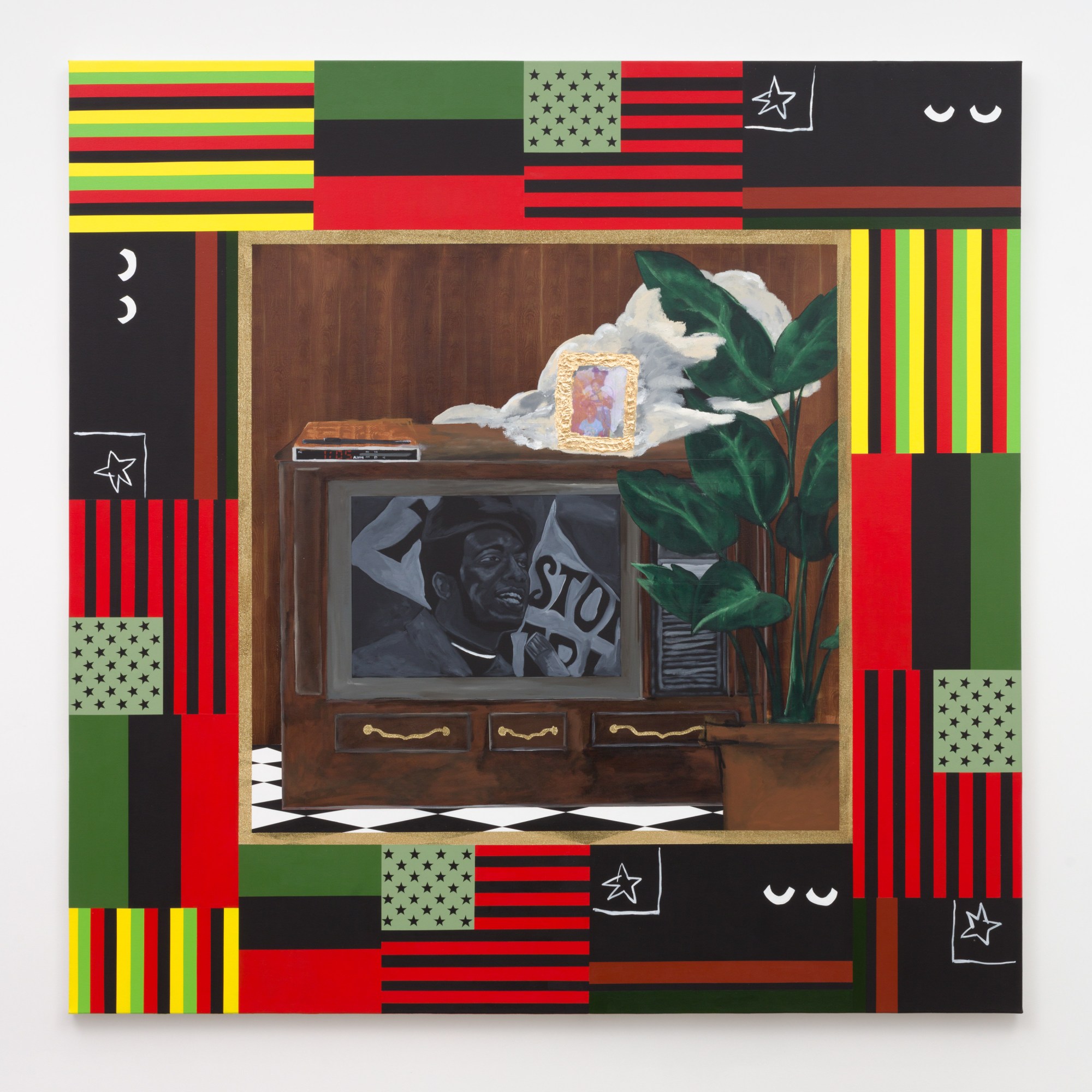
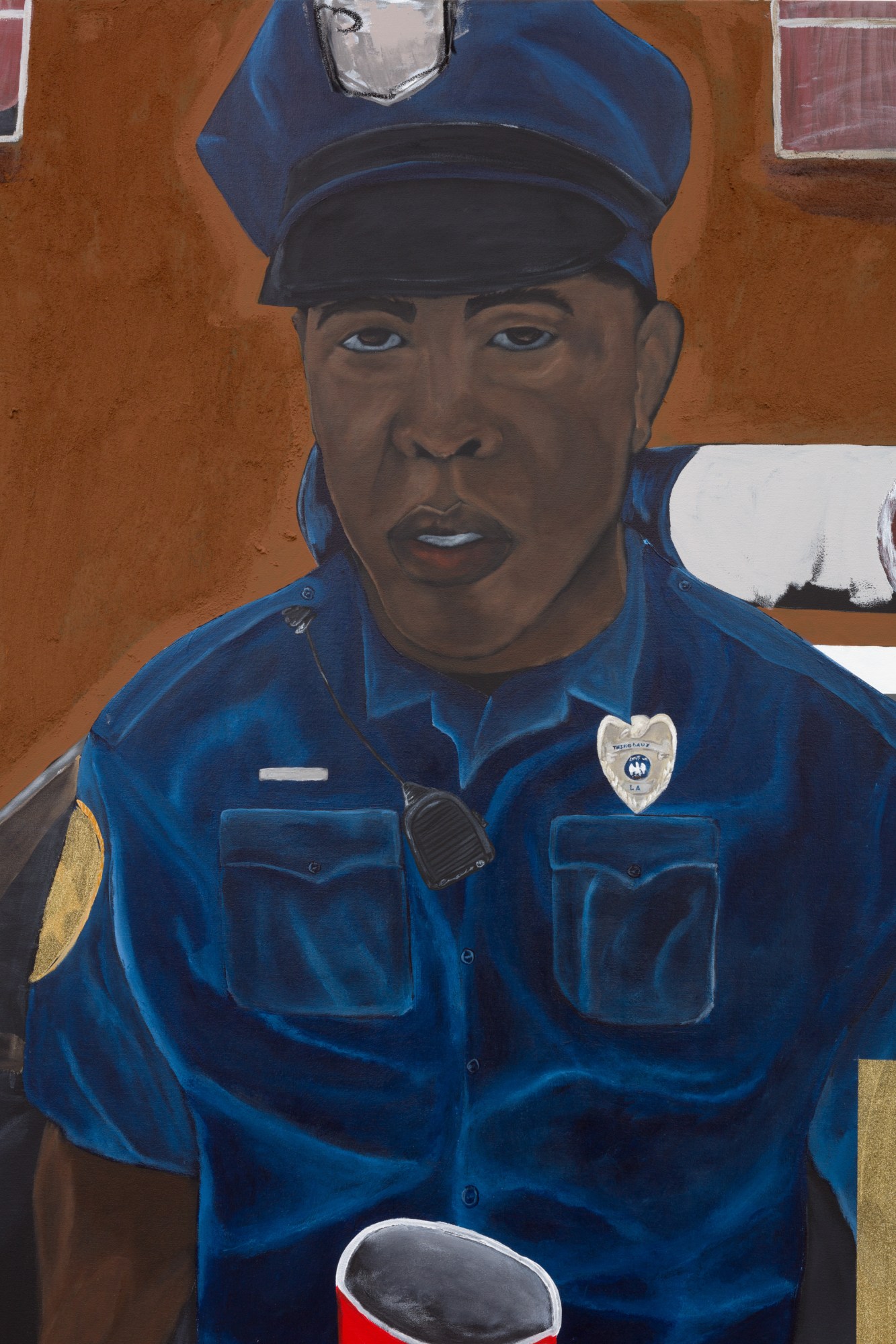
Credits
Images courtesy of the artist and Marianne Boesky Gallery, New York and Aspen. Copyright Jammie Holmes.
